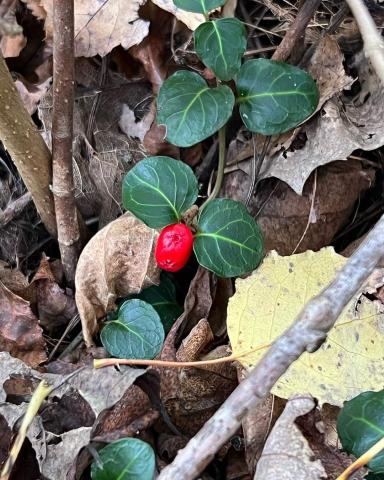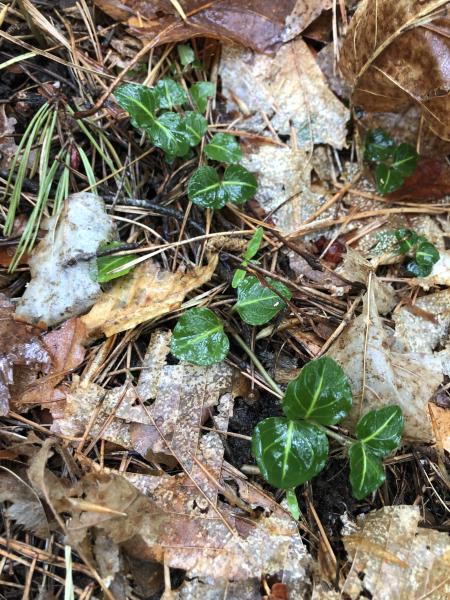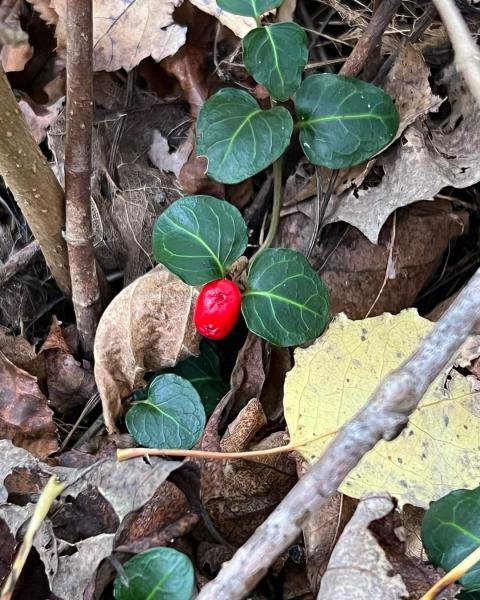
Names and Their Meanings
Partridge Berry - Mitchella repens
Partridge Berry
Description
This plant is used as a medicine for aiding childbirth by Haudenosaunee and Anishinaabe.
Partridge berries are edible, but do not have much flavor. You can distinguish them from a potential lookalike, by searching for the two round indentations in each berry that look like eyes. Cayuga elder Norma Jacobs shared wisdom about and from Partridge Berry and its purpose both in the Looking Back speaker series in 2011 at Six nations of the Grand River, and in an interview with Dr. Dolan. She said:
N. Jacobs: All trees have medicine, and all around the based there’s medicines, too. They’re there for support, the plants will help the trees absorb the nutrients of the earth. You know how there is often swamp around trees; that is medicine for that tree. The medicines represent our families, even in the springtime, the first medicine is the partridge berry, which is a medicine for babies. Babies come in the springtime and the first medicines are for them “small leaves plant” and partridge berry grow together and they grow where it’s wet because babies grow in water.
J. Dolan: Nia:wen to you, Norma! Oh I have so many questions because you said so much…One thing I wanted to ask about is to try and understand a little bit more about the medicine and the wells. With the partridge berries that you were saying that it can clear the phlegm from babies. Is that a tea?
N. Jacobs: Yeah. They just give them maybe a teaspoonful maybe three times a day and then they can wash them with that, too.
J. Dolan: And so it's out of the berries. It's not the leaves?
N: Yeah it's the berries. But there is, they call it niyukdoosoo, they are small leaves, they grow right next to it. So they combine those two. And it's just the way they are. They are partners in helping to cleanse.
Conservation Status
S5 (Secure) in Ontario, Québec, and New York


